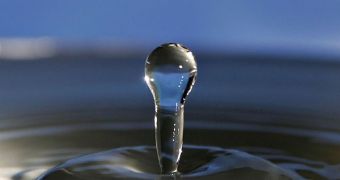The US National Science Foundation (NSF) and the Department of Energy (DOE) recently awarded experts at the University of Texas in Austin (UT) a total of $2.5 million, for research related to developing new methods of using sunlight to break up water (H20) and produce hydrogen (H2). The new materials will be used in the future to power up a new generation of more efficient electric vehicles, and also in electricity generators, providing more renewable power than currently available.
The three-year grants were awarded to a group of scientists consisting of Chemical Engineering Professor Charles Mullins, Chemistry Professor Allen Bard, and Mathematics Professor Irene M. Gamba. Two of the researchers, Bard and Mullins, are also associated with the UT Center for Electrochemistry, a multi-faculty collaboration that is already investigating new types of batteries, fuel cells, as well as different classes of solar cells. The team received $1.4 million from two NSF grants, and $1.1 million from the DOE.
“Sustainable energy ultimately will involve the conversion of solar energy economically and efficiently to chemical fuels and electricity. Our work focuses on discovering new materials for this and obtaining a better understanding of how their composition and structure govern their behavior,” Bard reveals. “The grants will fund us to explore finding new materials that will efficiently absorb sunlight and drive chemical reactions to break water into hydrogen (a fuel) and oxygen. These materials also need to be cheap and composed of elements that are abundant,” Mullins adds.
“Once promising materials have been identified, we'll research how to create nano-scale structures of that material that enhance the intrinsic properties of the material for light-absorption and water-splitting chemistry,” the expert says. Novel metal oxides are the team's starting point. They will also investigate existing types such as titanium dioxide and iron oxide, which have the ability to behave as semiconductors as well. The goal is to create a cheap hydrogen-production method. “Plus, it would be a sustainable form of energy. And energy, of course, is a terribly important problem that we are currently facing,” Mullins explains.

 14 DAY TRIAL //
14 DAY TRIAL //